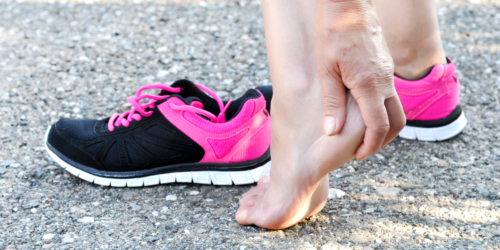Simple precautions can make a day by the pool or at the beach more memorable.
While the end of school is fast approaching and the hazy, lazy, crazy days of summer await, families looking for relaxation will enjoy many days at the pool or the beach. Who doesn’t remember our youth, running around in the sand without a care in the world, looking for starfish and collecting shells? Or playing Marco Polo in the family pool? Our memories tend to cloud over the bad and only focus on the good so we don’t remember the cuts, scrapes and other injuries that resulted in some forgotten tears.
The reality is that the same dangers that awaited our tiny feet then still exist for our children now. In fact, in some ways they have multiplied. The good news is that with a little knowledge and planning, you can minimize the risks for your children and hopefully eliminate some tears as well. So here are some risks to be aware of with some suggestions on how to minimize or eliminate the pain.
- Sunburn – With the exception of when they are in the home, children feet spend the majority of the non-summer months in socks and shoes. As the weather gets warmer and jumping in and out of the water is the priority, going barefoot is easier. Because of all those months without sun exposure, the skin on their feet and ankles will burn quickly when exposed to the sun. Make sure that your kid’s feet receive just as much attention when applying sunscreen as the rest of their bodies.
- Hot surfaces – Paved areas around the pool and the sand along the shore absorb the sun’s heat, presenting conditions where the bottoms of kid’s feet can burn very easily. Footgear such as the mesh and rubber shoes that surfers wear can help to prevent burns to the bottom of their feet while allowing children to move in and out of the water rapidly.
- Sharp objects in the sand – The beach is beautiful to look at but in the shifting sands sharp items, both natural and man-made, can be obscured from sight and present a challenge to feet large and small. These objects can slice through skin when stepped on, causing immediate damage in the form of open wounds as well as the potential for infection if the wound is not cleaned properly. As with hot surfaces, the best way to prevent problems is the use of footwear that provides protection without hindering jumping in and out of the water quickly.
- Bacteria and chemicals – Whether swimming in chlorinated pools, lakes or other natural bodies of water, the presence of chemicals and bacteria is usually not considered until an infection develops. Children (and adults) with open or healing cuts and wounds on their feet, or any area of the body for that matter, should take the safe route and avoid swimming until the cut or wound heals significantly. Then a waterproof bandage or Band-Aid should be worn as an extra precaution.
- Interesting little creatures – The inquisitive minds of children are drawn to creatures that look interesting such as crabs, jellyfish and crawling insects. They do not understand that these creatures have defense mechanisms like claws and stingers that can bring pain quickly. Make sure that your children are well supervised, educated on the risks found in nature and properly protect their feet to mitigate any dangers from accidently treading on our fellow creature.
As our mothers and grandmothers used to say, ‘An ounce prevention is worth a pound of cure’. By following these tips, we can honor their sage advice while protecting the delicate feet of our children.


